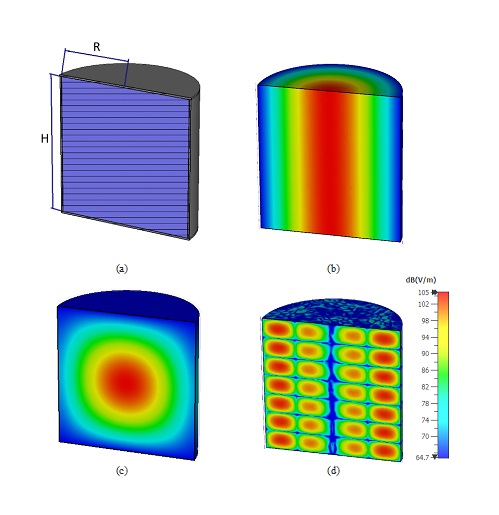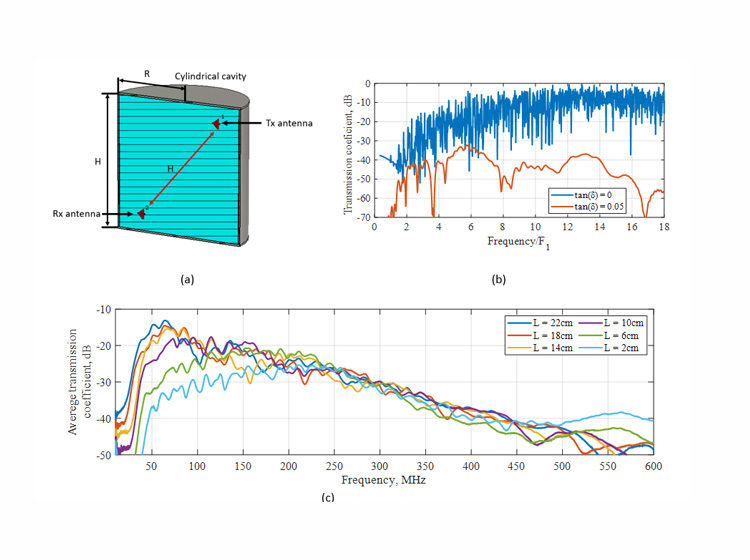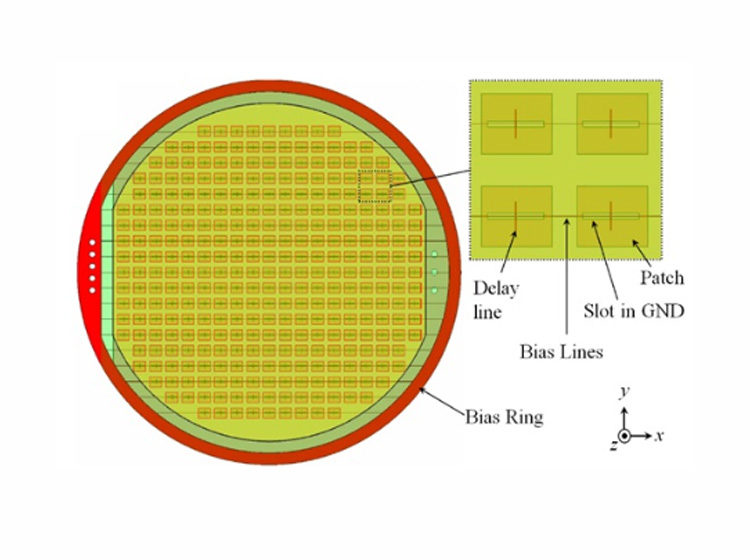Measurements of pertinent parameters of liquids such as temperature, density or viscosity within large, enclosed vessels, such as barrels, cisterns or tanks is an important practical task to control technological process or storage conditions. This type of measurements requires the establishment of reliable wireless communication between multiple sensors, preferably, but not necessarily uniformly distributed within the enclosed vessel. However, this is a challenging task since the applicability of the existing traditional communication methods is performance limited in the scenario of enclosed vessels filled with high-loss liquids.
As is known, optical communication links are reliable under line-of-sight conditions, however, they are adversely affected by the opacity and turbidity of liquids. Acoustic communications is a well-established approach for such scenarios but it is hampered by environmental factors such as temperature, pressure, and influence of external interference. Radio Frequency (RF) communications can be an attractive solution to overcome the above-mentioned limitations of optical and acoustic in-vessel communications. A standard RF link is established by the interaction of transmitting and receiving antennas, which are traditionally equal to half or a quarter of the wavelength. This means that the operational frequency needs to be relatively high (GHz range) to be able to use small antennas in the limited space of the vessel. However, at that frequency range, losses related to the propagation of electromagnetic (EM) waves through liquids are too high to establish a reliable communication link. Thus, a new approach for in-vessel communications is required to overcome these challenges.
Here we propose an alternative approach, which considers an enclosed volume as a low-frequency resonator with communication performed at its resonant frequencies. To this end, it is well known that any resonator has an infinite number of eigenmodes, which are characterized by their own eigenfrequency and a predefined EM field distribution. In this case, efficient data transmission between transmitting and receiving antennas is possible at eigenfrequencies. Due to the multiple reflections of EM waves from cavity walls, EM energy remains inside the enclosed volume, leading to reduced transmission loss between two antennas located inside the cavity in comparison with free-space propagation.

As a demonstration of the proposed principle, a cylindrical vessel, which has a height H and a radius R = H/2, as shown in Fig. 1 is used to demonstrate the practical feasibility of this approach. Simulation and experimental results are presented together with the analysis of the efficiency of the excitation of cavity resonators. Further, the influence of antenna sizes and dielectric properties of liquids on the transmission characteristics between two antennas is investigated. It is demonstrated that the determination of optimal antenna size providing communication links is one of the most important practical tasks for the development of an in-vessel communication system.



Leave a Reply